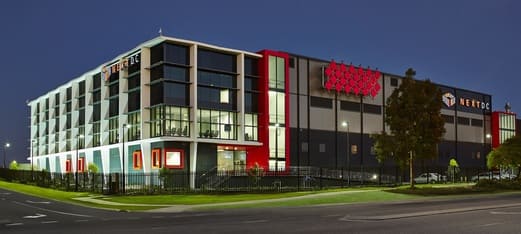By David Dzienciol, Chief Customer & Commercial Officer
In the post-COVID recovery there’s a battle underway between chaos and control of your cloud and interconnection architecture. As business leaders become more acclimatised working within ongoing disruption, we’re seeing a shift in stakeholder expectations unlike anything we’ve witnessed before.
Every day brings new skirmishes as organisations attempt to outflank two years of bedlam and introduce balance and embrace new opportunities in a world that has both changed forever and accelerated digitally. Cloud and interconnection architecture is key to transformation success
Right across the board, everyone who interacts with an organisation – whether it’s an employee, business partner or a customer – has something in common; they’re all looking for flexibility, autonomy, convenience. They want easier ways to do business and conduct their lives.
Read more: Dial up the autonomy and the flexibility will follow in your hybrid digital workplace
Convenience and the re-imagined customer
These expectations of customers come with an added layer of complexity. Not only is convenience emerging as a leading factor in the selection and purchasing process, but consumers also report the pandemic has motivated them to think differently about where, what and how they buy.
New research from Accenture refers to this group as the ‘Reimagined Consumer’, a group they assess as representing as much as half the purchasing pool:
“Through their purchase choices, they are purposefully seeking to influence their communities and the environment, and to confirm how they see themselves in the world… (and) are changing their buying habits accordingly.” - Accenture
What’s more, 72% of this group expect companies they’re doing business with to understand and address how their needs and objectives change during times of disruption – versus 27% of the ‘Traditional’ consumer group, or the remaining half of the purchasing pool.
Half of the ‘Reimagined’ consumer group report feeling let down or disappointed by the lack of support and understanding provided by companies during the last two years of COVID disruption, versus 14% of the Traditional consumer group.
Factors such as price and quality – traditionally the two primary drivers of purchasing decisions – have become table stakes, rather than the differentiators they once were.
Implications for the technology strategy
What does this mean for organisations who are re-evaluating their cloud and interconnection architecture technology strategy against the backdrop of this ‘Great Reset’? One thing we know for sure is technology has a vital role to play in orchestrating the frictionless interactions everyone wants with organisations – anywhere, and at any time.
Gartner calls it the "Total Experience (TX) Strategy” covering multi experience (MX), customer experience (CX), employee experience (EX) and user experience (UX). Gartner’s research and analysis concludes that by 2024, organisations providing TX will outperform competitors by 25% in satisfaction metrics.
Similarly, internal customers of IT are looking for enhanced user experience and empowerment to achieve better work/life balance. In a recent social media poll we conducted, a resounding 83% of respondents declared “the freedom to work from anywhere” was the most important feature they sought from a more flexible and/or autonomous future of work.
True flexibility
While there’s no single technology blueprint for success in a post-COVID operating environment, what organisations will need is cloud and interconnection architecture digital infrastructure that actively promotes flexibility and agility.
A truly flexible and agile platform is core for organisations aiming to ‘mix and match’ Hybrid IT models where both cloud-based platforms and their directly-owned and managed infrastructure are utilised on a fit-for-purpose basis.
Getting digital infrastructure and IT right is central to achieving many new imperatives in the reset economy. It governs your ability to:
- Accelerate customer journey innovation,
- Reduce risk associated with compliance, security, resilience and interconnection,
- Facilitate optionality around how customers and internal stakeholders access and use applications,
- Generate efficiencies around how infrastructure, data and connectivity complexities are managed
- Simplify the process of scaling, and shorten the time-to-market for new services and functionalities
- Enable deeper insights around customer preferences and behaviour to shape future strategy,
- Help capture new markets
Net zero expectations
While customer needs and objectives vary for organisations, a common theme at the forefront of conversations is sustainability. Driving operations towards net-zero is a key component of the ‘Great Reset’. It’s front and centre for boardrooms, investors, customers and teams.
Our newly elected Federal Government has committed a 43% reduction in carbon emissions by 2030. Achieving this target will come down to the whole economy playing their part, and doing the right thing for business and the environment.
EY research found that 90% of Australians care about sustainability when buying goods and services. Meanwhile, 41% of people will stop buying from a business they believed had done something socially or environmentally inappropriate, and 31% would tell their friends and family never to use the brand.
In other words, when it comes to sustainability, your customers and other stakeholders are demanding you walk the walk.
Fundamental economics of scale plus dedicated focus on design, engineering and operational excellence ensures Hybrid IT models - featuring colocation and cloud - are inherently more efficient than private infrastructure.
As digitisation accelerates, your IT footprint becomes more of a carbon burden. How it’s measured and offset is a great challenge and something that must be factored into your future readiness strategy.
NEXTDC work in partnership with the leading Fortune-500, ASX–listed and Government organisations to help them navigate the challenges and opportunities of the ‘Great Reset’.
Download our new report The Great Reset to better understand these emerging themes.
Or, reach out to us and we’ll help reimagine your cloud and interconnection architecture to meet the expectations of all your key stakeholders.


